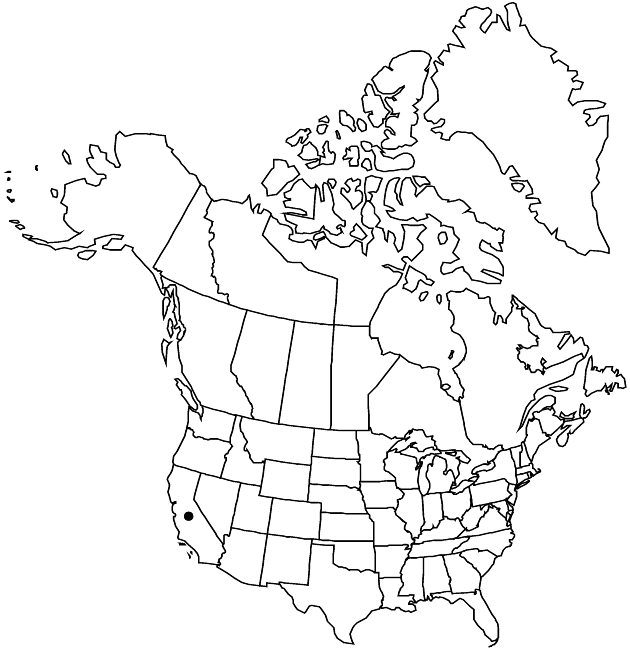Taraxacum californicum
Bull. Torrey Bot. Club 52: 227. 1925.
Plants 3.5–10(–20) cm (to 30 cm in fruit); taproots branched. Stems 1–10+, ascending to decumbent (at and after flowering) (occasionally erect), usually purplish, (mostly at or below foliage before fruiting) glabrous, often cobwebby-villous basally. Leaves 10–20, horizontal to patent; petioles usually broadly, sometimes narrowly winged; blades oblanceolate to narrowly oblong, sometimes linear-oblanceolate, 5–12 × 1–2(–3) cm, bases cuneate, margins toothed or denticulate, occasionally with basal lobes, rarely some entire, lobes straight or slightly retrorse, lanceolate to triangular-long-acuminate, teeth narrowly to broadly triangular, straight to retrorse, apices obtuse to rounded or ± acute, faces glabrate or glabrous. Calyculi 9–12, appressed, green, sometimes ± hyaline, often purplish, ovate-lanceolate to broadly ovate bractlets in 2 series, 5–7 × 1.7–4.3 mm, margins hyaline, purplish (at least distally) or white, scarious, apices acuminate to long-acuminate or widely caudate, tips ± rounded, erose, hornless. Involucres green, tips purplish gray, broadly campanulate, 11–16 mm. Phyllaries 12–16 in 2 series, lanceolate to lanceolate-linear, 2–3.5 mm wide, margins not or narrowly scarious, sometimes broadly so basally, hyaline, apices rounded, erose, scarious. Florets: corollas pale yellow, outer abaxially striped pale purplish, 9–10 × 1.5–2. Cypselae pale brown, bodies obovoid, flattened, 2.2–2.7 mm, cones narrowly conic, 0.5–0.7 mm, beaks slender, 6–9.5, ribs 15–16, narrow, faces muricate distal 2/3–3/4; pappi creamy, 4.5–5.5 mm. 2n = 16.
Phenology: Flowering late spring–summer.
Habitat: Moist alpine meadows in yellow pine forest zone
Elevation: 1900–2400 m
Discussion
Taraxacum californicum is known only from the San Bernardino Range. It is easily distinguished from T. ceratophorum by the lack of horns on the phyllaries and bractlets of calyculi.
Selected References
None.
